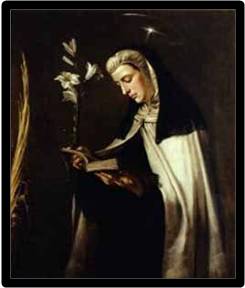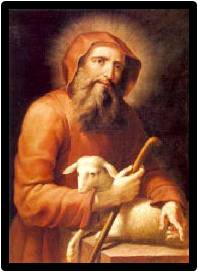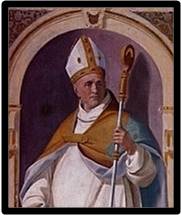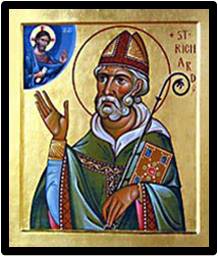
In 1240, a few Carmelite brothers from Palestine started a monastery in Toulouse, France. The great Carmelite priest, St. Simon Stock, visited Toulouse twenty-five years later. A good and devout woman asked to see him. She introduced herself simply as Joan.
She earnestly asked the priest if she could join the Carmelite order as an associate. St. Simon Stock who was the head of the order agreed and granted Joan’s request. Joan became the first lay associate. She received the habit of the Carmelite order and in the presence of St. Simon Stock, Joan made a promise to always be chaste and pure.
Joan continued her quiet, simple life in her own home. She tried to be as faithful as possible to the rules of the Carmelites for the rest of her life. Joan went to daily Mass and devotions at the Carmelite church.
She spent the rest of the day visiting the poor, the sick and the lonely. She trained the altar boys. She helped the elderly and those who were weak and frail by performing useful tasks and running errands for them. Joan prayed with them and brightened many lives with her cheerful conversations.
Blessed Joan carried a picture of the crucified Jesus in her pocket. That was her “book.” Every now and then, she would pull out the picture and gaze at it. Her eyes would light up. People said that Joan read some new and wonderful lesson every time she studied the picture.

St. Francis was born in the tiny village of Paola, Italy. His parents were poor but humble and holy. They prayed to St. Francis of Assisi for a son and when he was born, they named him Francis. The boy went to a school taught by the Franciscan priests.
When he was fifteen, he went on a pilgrimage to Rome and Assisi. Then with his parents’ permission, he went to live in a cave as a hermit and spend his life for God alone.
Before he was twenty years old he began to attract followers and other young men joined him. When his followers became too many, St. Francis left his cave and with permission from the Church started a new religious order, setting rules for them to follow.
The people of Paola built a church and monastery for him and his followers. He called his new order the “Franciscan Order of Minim Friars.” “Minims” means “the least of all.”
Everyone loved St. Francis. He prayed for them and worked many miracles. He was a prophet and could read minds. He told his followers that they must be kind and humble, and do much penance. He himself was the best example of the virtues he preached.
Once someone visited the saint and insulted him to his face. When the man was finished, Francis did something unusual. He quietly picked up some hot coals from the fireplace and closed his hands tightly around them. But he was not burned at all. “Come, warm yourself,” he said to his accuser kindly. “You are shivering because you need a little charity.” At such a miracle, the visitor changed his mind about Francis. From then on, he admired him greatly.
Another time, St. Francis wanted to sail across the Straits of Messina to Sicily, but the boatman refused to take him. Francis laid his cloak on the water, tied one end to his staff to make a sail, and sailed across with his friends.
King Louis XI of France had not lived a very good life. Pipe Sixtus IV requested Francis to minister to the king when he was dying and King Louis eagerly welcomed Francis. Just the thought of dying made the king terrified. He wanted Francis to work a miracle to cure him. Instead, the saint gently helped the frightened man to prepare well to die a holy death.
The king had a change of heart, accepted God’s will and died quietly in the arms of Francis. Before he died, Francis helped restore peace between France and Spain by convincing King Louis to return some land which was the cause of the trouble. He also helped restore peace between France and Brittany by advising a marriage between the two ruling families.
St. Francis lived a long life praising and loving God. He died on Good Friday in 1507, at the age of ninety-one.




